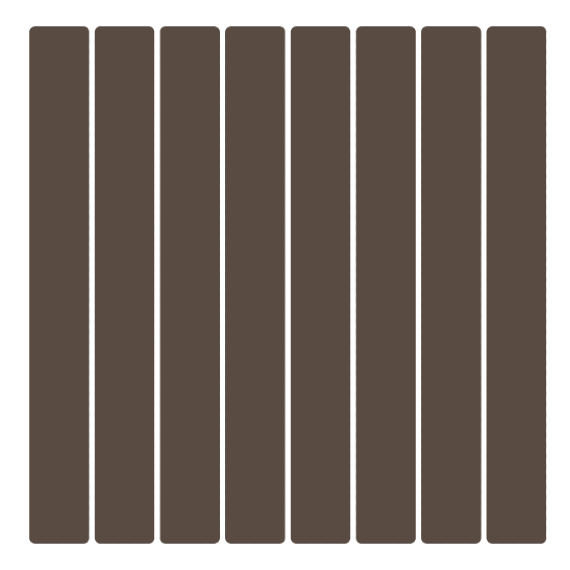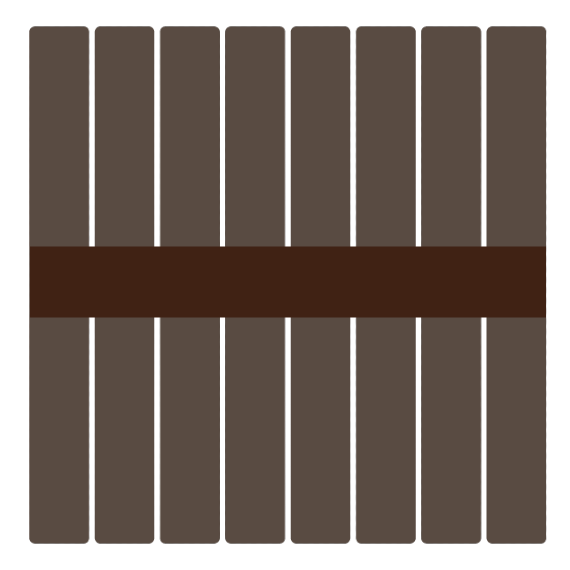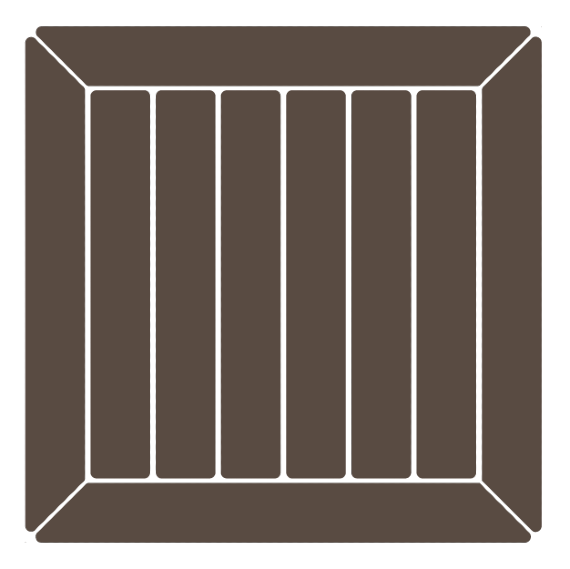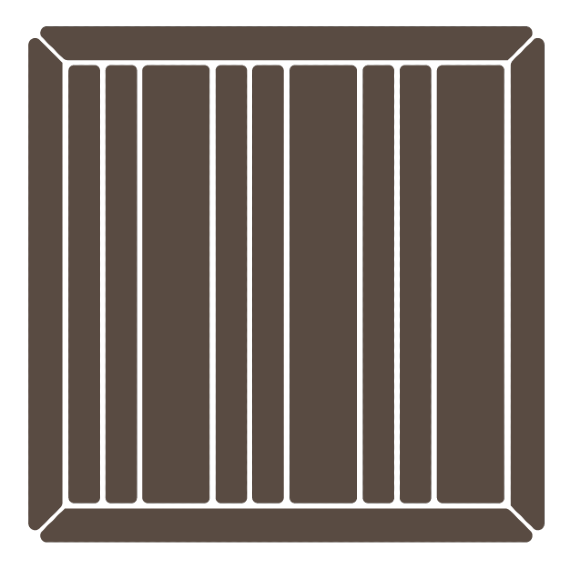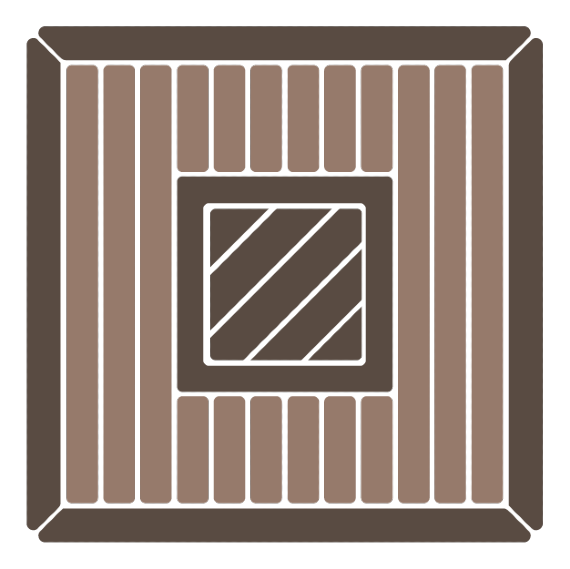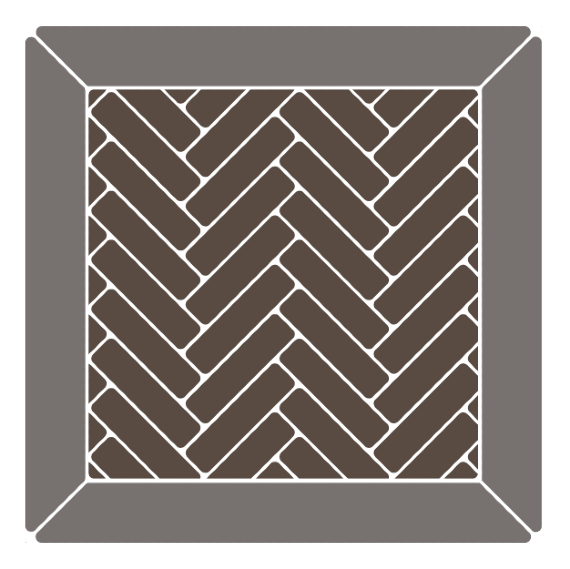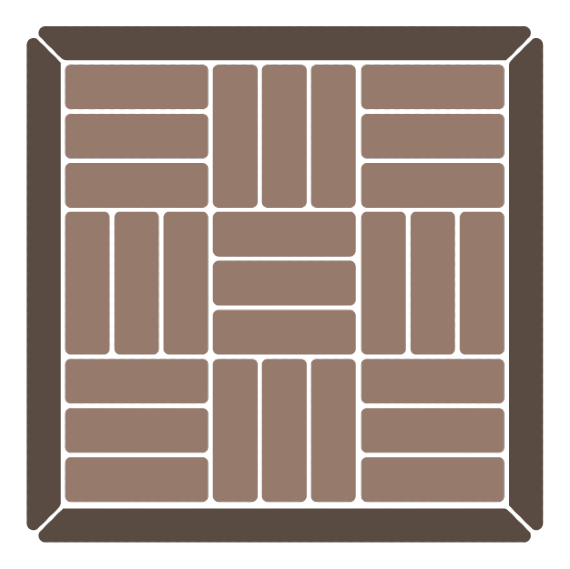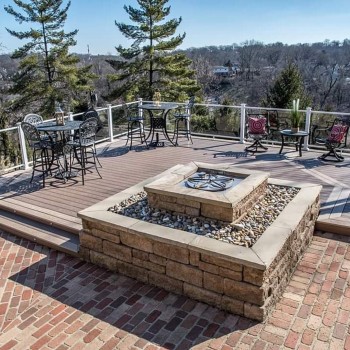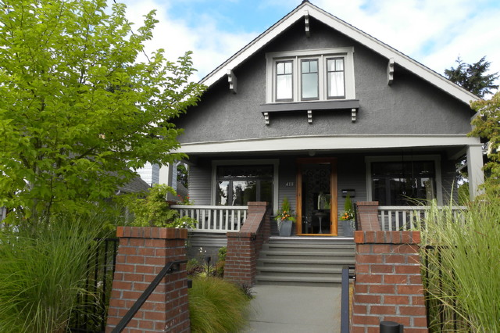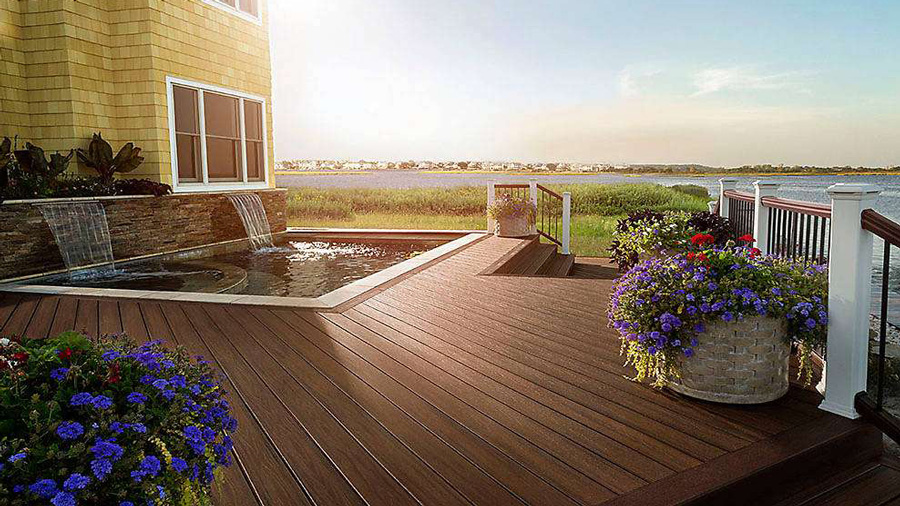LAYING OUT DECK PATTERNS FOR MAXIMUM EFFECT
Planning and designing a deck and outdoor living space for your family is an exciting backyard project that can enhance the entire feel of your home. Once your deck frame is built, and you begin shopping around for decking materials, consider adding more visual appeal to your deck by installing a unique deck board pattern and design!
You might be thinking ahead to save money on deck board costs if your deck has unique shapes or measurements. You might just be looking to catch the eye of neighbors and guests. Either way, a one-of-a-kind deck board pattern is the answer.
DECKING BOARD PATTERNS
Unique decking board patterns can give the illusion of a larger deck space, create a focal point that you want to highlight in your area, or emphasize different sections of your deck. Picking the right deck board layout can drastically alter the personality of your deck. Here are some of our favorite decking patterns for deck owners with varying levels of building skill:
Deck Board Pattern: Classic Single Width
Deck Building Level: Easy
Single-width is a standard deck pattern where the deck surface is created by installing deck boards of the same width consistently and evenly across the entire outdoor space. The Single Width deck pattern is the most commonly installed deck board layout throughout the entire United States. The consistent lines of the Single Width layout deliver a classic look that won’t overpower any other deck design elements such as deck furniture or outdoor appliances.
Highlights of this Deck Board Pattern
Easy Deck Board Installation: As the most straight-forward decking board pattern, the Single Width deck board layout can be attached directly to standard deck framing. This deck board pattern is a great option for DIY deck builders, or it can be a quick job to help you save money if you’re hiring a professional deck contractor.
Perfect for Any Deck Size: With a timeless look and unpretentious style, this composite deck board pattern will work well on decks, porches, or patios of any size. On larger decks, this straightforward deck board design emphasizes the grand atmosphere of your outdoor living space. For smaller decks, the clean straight lines of the decking won't steal attention or overpower the small deck surface area.
Deck Board Layout Installation Notes
For basic, single-width deck board installation, make sure deck joists in the deck frame are spaced at a maximum of 16 inches on center for deck board support.
Deck Board Pattern:Transition Board
Deck Building Level: Easy
Choose a transition board layout to spice up the otherwise-uniform single-width pattern. With a transition deck board installed perpendicular to the rest of the decking planks, this layout allows the deck builder to use shorter board lengths which can save you money. This pattern is also perfect for creating separation between different sections of the deck. Installing a composite deck board of a different shade or a uniquely stained natural wood deck board for the transition board will create a visually appealing style. If you want to know how to lay deck boards on a long deck, transition deck boards can be a great option.
Highlights of this Deck Board Pattern
Breaks up your outdoor living space into different sections for easier gathering.
Allows you to use shorter board lengths and save money.
Deck Board Layout Installation Notes
Utilize Butt Joint hardware to create a deck board attachment connection for your transition deck board. There must be a joist on either end of the transition board for increased deck support.
Deck Board Pattern: Picture Frame
Deck Building Level: Moderate
If someone mentions deck patterns with borders, this is usually what people envision. Picture framing a deck involves installing one or more deck boards around the perimeter of the deck with a standard deck board inlay within. Picture frame patterns create a more finished feel to your outdoor living space, delivering a touch of visual detail to your deck while still allowing you to stick with a classic deck board style.
Picture Frame deck patterns create a custom look for your space while saving your deck project money overall. Want to add even more style to your deck space? Combine a picture frame deck layout with any other unique deck board pattern inside as your deck surface!
Highlights of this Deck Board Pattern
Conceals Ends of Composite Deck Boards: Adding a picture frame detail to your composite deck is a great way to elevate your deck style while protecting and completing your decking install. The outlining picture frame pattern creates a finished look, and at the same time, creates a natural cover for the ends of your boards.
Won't Steal the Spotlight: Picture frame designs add a dash of visual interest to your outdoor living space without dominating other deck features like lighting or railing. Subtle, modern, and versatile, the picture frame deck pattern doesn't make a splash but rather delivers a refreshing mist.
Deck Board Layout Installation Notes
Picture frame decking requires additional support for the deck framing and substructure. Learn more in our DecksDirect guide to picture framing a deck.
Deck Board Pattern: Pinstripe
Deck Building Level: Moderate
The pinstripe deck board pattern is another subtle option that can look very clean and cool in the right setting. Traditionally defined by two narrow boards sandwiched by standard or wide-width deck boards on either side, the pinstripe deck pattern creates unique details within your deck surface. A pinstripe deck layout is ideal for those with a minimalist style, or for anyone who wants a hint of cool within their space.
Highlights of this Deck Board Pattern
Classically Cool: As far as deck patterns go, the pinstripe deck board layout delivers heightened sophistication that doesn't try to upstage or compete with other deck decor.
Relatively Unused: You won’t see many pinstripe deck board layouts across the nation. It’s a truly unique look that should draw plenty of interest from guests and neighbors.
Deck Board Layout Installation Notes
This deck inlay design can be installed on standard deck framing, making for a relatively quick DIY decking install.
Deck Board Pattern: Diagonal
Deck Building Level: Advanced
Diagonal decking patterns emphasize a strong sense of style and deck build complexity. With sleek deck board lines running from side to side, the diagonal deck board layout delivers an increase in curb appeal and compliments! Diagonal inlay deck patterns are dynamic and unique, creating an outdoor living space perfect for hosting parties and showing off.
Highlights of this Deck Board Pattern
Creates a Unique Dimension: Among the various decking patterns, diagonal deck board lines draw the eyes across and through a complete space. This is ideal for large outdoor spaces,as well as multi-section decks where you want to highlight the different areas.
Contemporary Look: Have your heart set on a modern-looking deck railing system such as metal deck railing, cable railing, or glass rails? A diagonal deck board pattern helps underscore your deck's modern style.
Deck Board Layout Installation Notes
This complex deck board pattern requires a very specific deck framing and support system. DIY deck builders are encouraged to speak with or hire a professional deck contractor to ensure accuracy. Give us a call at 1-877-777-0193 and our experts would be happy to guide you through the framing requirements.
Deck Board Pattern: Herringbone
Deck Building Level: Advanced
For those looking for an intriguing deck board layout, staggered decking patterns are often a top choice. Chief among those options is the Herringbone, which features multiple deck boards meeting at 45-degree angles to create a staggered zig-zag pattern, similar to a chevron design.
Detailed and elegant, the Herringbone pattern resembles the texture of an intricate fabric. The interlocking design grabs attention and can bring new life to your deck space.
The Herringbone deck pattern looks like a chevron pattern, but it requires fewer angled cuts. (A chevron pattern, in design, is typically a seamless inverted V pattern). By taking short boards and placing them at a 45 degree angle, you can create a stunning look that sets your project apart. Keep in mind that placing boards at an angle requires you to shorten your framing span.
Highlights of this Deck Board Pattern
Wow Factor: This advanced deck board pattern delivers high visual interest and immediately elevates the entire feel of your home's outdoor living space. Herringbone deck patterns can also work well as an intricate centerpiece when used as a framed inlay offset by single-width decking throughout the rest of the space.
Great for Unique Deck Shapes: A herringbone pattern at the center of the deck can cover any natural breaks and minimize joints and gaps.
Deck Board Layout Installation Notes
This complex deck board pattern requires a very specific deck frame and support system. DIY deck builders are encouraged to speak with or hire a professional deck contractor to ensure accuracy.
Deck Board Pattern: Tile or Patchwork
Deck Building Level: Advanced
Tile decking patterns are made up of groups of deck boards running perpendicular to one another. The geometric deck design creates crisp right angles that put precision and style on full display.
Highlights of this Deck Board Pattern
Unbelievable Grace: With clearly defined style and looks, the tile deck board designs are a powerful method of highlighting your outdoor space. The perfect choice for those deck owners who clearly know their own sense of style and want to showcase it to the world.
Establishes Space: The clear borders to this deck pattern draw the eye outward, contributing to a sense of enlarged space. That said, the repeating pattern of tile deck patterns mean that this inlay option is best-suited for a sizable outdoor living space.
Deck Board Layout Installation Notes
Despite all the right angles, tile deck patterns require a specialized substructure and deck joists that will support weight differently depending on the orientation of the deck boards.
This complex deck board pattern requires a very specific deck framing and support system. DIY deck builders are encouraged to speak with or hire a professional deck contractor to ensure accuracy. Give us a call at 1-877-777-0193 and we can guide you through the framing needs of a tile deck board pattern.
Why Decking Board Patterns Matter
Decking is about more than function — it's about style, flow, and making the most of your outdoor space. The deck board layout pattern you choose dictates how your deck looks and influences everything from durability to cost efficiency. Whatever your goal, here's why decking board patterns matter:
1. Aesthetics: The Look That Sets Your Deck Apart
The right board layout can turn a basic backyard platform into a visually striking focal point. Patterns like herringbone or picture framing add refinement, while simpler layouts like single-width maintain a timeless, understated appeal. If you want a deck that seamlessly integrates with your home's architecture, your board layout can reinforce that cohesion — or introduce contrast for a modern touch.
2. Space Perception: Making a Deck Feel Bigger (or More Defined)
Your deck board layout has a direct impact on how your space feels. Diagonal and herringbone patterns create movement, drawing the eye outward and making a deck appear larger. Picture framing or tile patterns help define zones, giving a sense of separation for dining, lounging, or grilling areas. If you have a long, narrow deck, you can install staggered decking patterns to break up the length and add visual balance.
3. Practicality: Strength, Stability & Maintenance
Some deck pattern ideas improve strength and durability by distributing weight more evenly. Diagonal patterns can add structural integrity by reducing the distance boards span between joists so they're less likely to warp over time. Transition boards can minimize gaps where debris collects, while picture framing can provide a clean, finished edge that reduces trip hazards. From a maintenance standpoint, patterns that use fewer seams or avoid intricate cuts (like classic single-width decking) are easier to clean and replace if needed. On the other hand, high-detail layouts like herringbone or tile decking require precise cuts, meaning more installation time but a truly unique finish.
4. Cost Efficiency: Maximizing Materials & Labor
If you want to save on materials, the right pattern can help. Transition board layouts let you use shorter boards, reducing waste. Staggered decking patterns minimize offcuts, while simple single-width layouts streamline installation, making them a budget-friendly choice. More intricate deck board layout patterns — like herringbone or patchwork — require additional framing and precise cuts, which means more labor and material cost.
5. Long-Term Impact: Resale Value & Home Appeal
A well-designed deck adds resale value to your home. A thoughtfully laid-out pattern can elevate the perceived quality of your space, making it more attractive to future buyers. Homeowners looking for a high-end, custom feel may gravitate toward decks with framed inlays or patterned sections, which create a finished, built-to-last impression.
MEASURING: THE KEY TO PRECISE DECKING BOARD PATTERNS
Learn how to get the perfect deck measurements and find out exactly how many deck boards you'll need for your favorite decking board pattern in this helpful video.
Frequently Asked Questions About Decking Board Patterns
With so many decking board patterns available, it's natural to have questions, especially in a $4.1 billion North American deck market. Here are some common inquiries we receive.
What's the best deck pattern for high-traffic areas?
For decks that get a lot of foot traffic, consider diagonal or herringbone patterns — both provide added structural integrity. Also, picture framing helps define walkways and prevents the ends of boards from wearing out prematurely in high-use areas.
Can I install deck boards in a pattern on a curved deck?
Yes, but it requires custom cuts and extra framing. For curved decks, a radial picture frame pattern can create a smooth transition, or you can cut boards into sections that follow the curve. Composite decking is often easier to work with on curved designs because some brands offer heat-bendable boards.
Can I mix different board colors in my deck pattern?
Absolutely! Mixing board colors can enhance visual interest and create distinct zones within your deck. A picture frame or transition board layout is perfect for incorporating contrasting colors. More intricate patterns like herringbone or tile decking can blend multiple shades for a high-end look.
Knowledge Center
Tips and tricks on deck building and designing from the experts here at DecksDirect!


